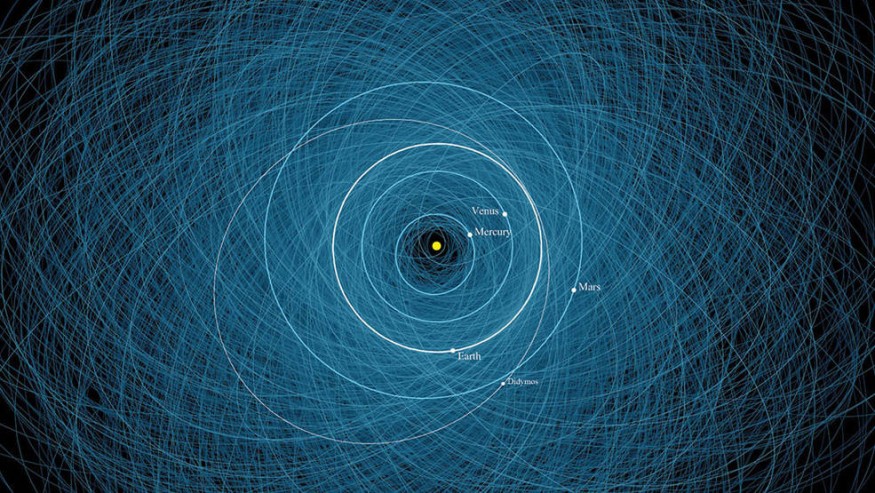The program used by NASA's Jet Propulsion Laboratory (JPL) to analyze potentially dangerous asteroids was recently updated to account for the effect of sunlight on orbits, among other improvements. Sentry-II, a new impact monitoring algorithm, replaces the software that has been in use for 20 years.
Sentry-II will continue to compute for at least the next decade, notifying the objects with the most dangerous orbits to Earth. Scout is a system that evaluates asteroids whose orbits are only partially known.

This diagram shows the orbits of 2,200 potentially hazardous objects as calculated by JPL’s Center for Near-Earth Object Studies (CNEOS). Highlighted is the orbit of the double asteroid Didymos, the target of NASA’s Double Asteroid Redirect Test (DART) mission.
NASA Shifts to Sentry-II to Detect Dangerous Asteroids
Since Sentry is no longer a viable technology, NASA (per Republic World) has created Sentry-II, a newer and improved program version. According to the agency, astronomers will monitor more than 3,000 asteroids and calculate their impact probabilities with the upgraded version, even in cases where Sentry failed. Interestingly, Sentry-II would evaluate all potential repercussions with probabilities as low as a few chances in a million. Another benefit of this newer technology is that it does away with the disadvantages of its predecessor.
Sentry's flaw was that it couldn't evaluate the Yarkovsky effect, which can cause an asteroid's course to change over decades or centuries. When the sun's rays heat one side of the asteroid, it cools down. It releases infrared energy, which generates a drive to modify the asteroid's course.
About Yarkovsky Effect
According to Space.com, the Yarkovsky effect occurs when sunlight is absorbed by the asteroid's surface and re-emitted as heat. The heat release has enough but deep influence on an asteroid's route through space - and might affect the asteroid's chances of colliding with Earth.
ALSO READ : Asteroid Collisions That Formed Martian Craters Have Been Consistent For Over 600 Million Years
Astronomers have recognized the Yarkovsky effect for decades. Still, it was only lately that computer tools powerful enough to evaluate big datasets were developed. Sentry-II will allow the agency to analyze probable consequences with probability as low as a few chances in a million.
NASA's Sentry Method
KQED said the first Sentry method, which has been used since 2002, performed well in estimating asteroids' courses and gravitational interactions with the sun and planets a century in the future. On the other hand, Sentry I had limits, and humans had to step in and handle some of the calculations.
It could not, for example, account for variations in an asteroid's trajectory caused by nongravitational factors like solar heating; these are modest but consistent aberrations. Sentry I also had trouble calculating how much an object's route would shift as it came close to Earth and our planet's gravitational pull.
Sentry-II takes these effects into consideration deftly, quickly arriving at more precise estimations and predictions. This high-powered mission is well-equipped to deal with the onslaught of orbital data coming in from all corners of the globe.
How Sentry-II Works
To comprehend how Sentry-II works it's vital to remember that each asteroid has its own uncertainty zone, which can change over time. NASA claims that their new software technique chooses random spots throughout the whole uncertainty zone and is not constrained by any assumptions about how the uncertainty region could evolve.
It then forecasts the potential orbits that may hit Earth inside the full zone of uncertainty, allowing astronomers to home in on additional extremely low probability impact possibilities that its predecessor may have overlooked.
RELATED ARTICLE : NASA's Near-Earth Asteroid Scout to be Visited by Spacecraft; The 1st Deep Space Mission of Its Kind
Check out more news and information on Space in Science Times.










